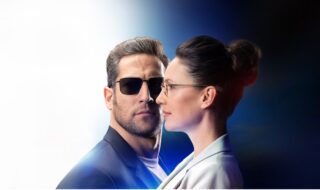
Blue Light…Numbers to Gnosh
It’s often easiest to share information about complex topics like blue light in sound bites. To help you craft your own presentation strategy for communicating the dangers of UV and blue light, here are a dozen need-to-know factoids on this all-important topic.
Tip: Since nine out of ten patients never bring up digital eyestrain with you, be sure you initiate that conversation.
OUTDOORS
5%…Exposure to UV radiation rises by almost 5% every 1,000 feet above sea level.
20%…At 8,000 feet, UV radiation exposure is almost 20% more than at sea level.
7%…In the summer, green grass and trees reflect less than 7% of light.
85%…According to The Vision Council, because snow is so reflective, up to 85% of UV rays from the sun are reflected upward from the snow.
60%…According to AMC Cancer Research Center, by avoiding exposure during peak hours (11-4 daylight savings time), sun exposure can be reduced by 60%.
55%…More than half of young people in their 20’s report they don’t wear sunglasses.
3x…Some medications can triple the speed of sunburn to the eyes.
INDOORS
60%…More than 60% of adults spend five hours or more on digital devices every day.
90%…Nine out of ten patients never bring up digital eyestrain with you, so be sure you initiate that conversation.
40%…More than four out of ten adults have jobs that require prolonged periods at a computer or tablet.
7 hours…The Kaiser Family Foundation reports that children spend more than seven hours a day in front of digital media/devices.
60%…The not-yet-fully-developed eyes of kids under age 10 allow 60% more UV to penetrate the eye than would an older person’s.
What information do you share with patients about blue light? Tell us and share in the conversation on Facebook here.
Comments are closed.









